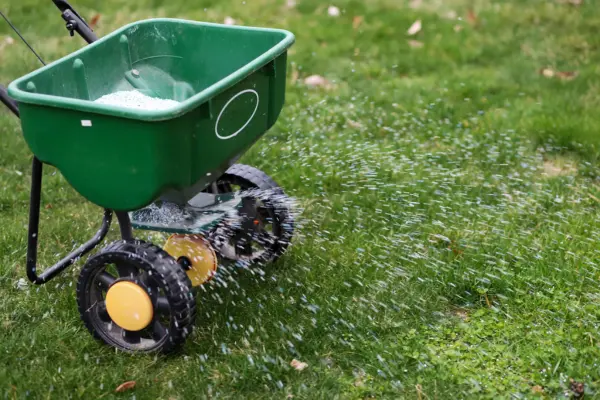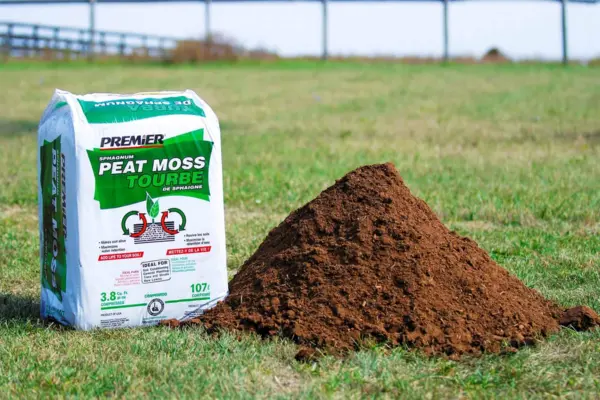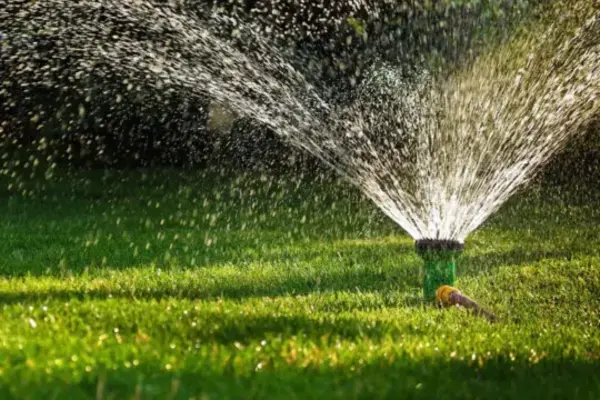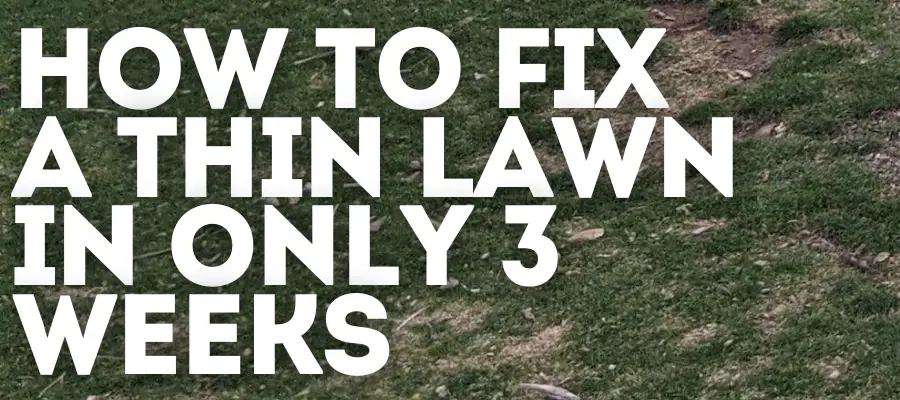Is your lawn looking thin and patchy by late summer? Don’t worry; you’re not alone. keeping lawns green and healthy is a pride for many homeowners but many homeowners face this challenge due to intense heat and other stress factors.
In this article, we’ll show you how to transform your thin lawn into a lush, green paradise in just three weeks.
How to Fix a Thin Lawn step by step
1) Prepare the Lawn

To kick off the renovation process, you need to start with a well-hydrated lawn. Deep watering ensures that the soil is moist, which is vital for seed germination and healthy grass growth.
Water early in the morning before starting your lawn repair. This allows the soil to be moist but not muddy. Early morning watering also reduces evaporation and allows grass to dry before evening.
Use a sprinkler system or hose to ensure even coverage. Hand water any areas not reached by sprinklers. A soaker hose or drip irrigation system can also be effective for consistent moisture.
Tips for Effective Watering
Watering Depth: Aim for a depth of 6-8 inches to ensure the root zone is adequately hydrated. You can test this by pushing a screwdriver into the soil; it should penetrate easily if the soil is moist.
Avoid Overwatering: Too much water can lead to root rot and fungal diseases. Ensure the soil is moist but not soggy.
2) Apply Fertilizer

Fertilizing helps to nourish the existing grass and promote new growth. Ammonium sulfate is recommended for this task due to its effectiveness and quick results.
Why Ammonium Sulfate? Unlike urea nitrogen, ammonium sulfate is water-soluble and immediately available to plants, making it ideal for stressed lawns. It also provides sulfur, which helps in the formation of proteins in grass.
Use a granular spreader to apply the fertilizer evenly across the lawn. Ensure even coverage to avoid burning the grass. Follow the manufacturer’s instructions for the appropriate application rate.
3) Overseed the Lawn

To fill in the thin spots, overseeding is essential. The choice of grass seed will depend on your current lawn mix:
Perennial Ryegrass: Ideal for cool-season lawns, blends well with existing grass. It germinates quickly, providing fast coverage and is suitable for overseeding during cooler temperatures.
Kentucky Bluegrass: Requires a longer time to germinate but is effective for specific types of cool-season lawns. It spreads through underground rhizomes, helping to fill in bare spots over time.
How to Overseed
Use the same spreader used for fertilizer application. For hard-to-reach areas, hand-seeding might be necessary. Consider renting a broadcast seeder if you have a large lawn.
Spread the grass seed evenly over the entire lawn and focus on bare patches. Use a rake or garden fork to lightly mix the seeds into the soil, ensuring good seed-to-soil contact.
4) Cover the Seed

To protect the seed and retain moisture, covering with peat moss is crucial.
Peat moss helps in moisture retention and protects seeds from environmental stressors like heat and wind. It also provides a small amount of organic matter to improve soil structure.
Spread a thin layer of peat moss over the seeded areas. Use a rake or your hands to distribute it evenly, ensuring that the seeds are covered but not buried too deep.
Tips for Application
Spread Evenly: Ensure the peat moss covers the seed without creating heavy clumps. A thin, even layer is sufficient to protect the seed and retain moisture.
Tamp Down: Use your feet or a light roller to gently press the peat moss into the soil, ensuring good seed-to-soil contact. This helps in seed germination and prevents seed displacement.
Alternative Covering Materials
Straw Mulch: An alternative to peat moss, straw helps retain moisture and protect seeds. However, it may introduce weed seeds if not properly treated.
Hydroseeding Mulch: For larger areas, hydroseeding mulch mixed with water can be applied using a sprayer. This method ensures even coverage and excellent seed-to-soil contact.
5) Watering Schedule

Maintaining proper moisture is key to successful seed germination and grass growth.
Initial Days: Water three times daily for the first week to keep the seedbed consistently moist. This frequent watering is crucial during the germination phase when seeds are most vulnerable.
Subsequent Days: Reduce to once daily for the second week. As the grass begins to grow, the watering frequency can be reduced while increasing the depth of watering.
Ongoing Care: As the grass begins to establish, water deeply every other day to encourage strong root development. Ensure the soil is moist to a depth of 6-8 inches.
Watering Tips
Avoid Overwatering: Ensure the lawn remains moist but not soggy to prevent disease and promote healthy growth. Overwatering can lead to shallow root systems and increase the risk of fungal diseases.
Adjust Based on Weather: Modify your watering schedule based on rainfall and temperature changes. During cooler or rainy periods, reduce watering frequency to prevent waterlogging.
Conclusion
Fixing a thin lawn in just three weeks is achievable with the right approach and consistent care. By understanding the causes of a thin lawn and following a structured repair process, you can revitalize your grass and enjoy a lush, healthy lawn. Remember to continue regular maintenance to keep your lawn looking its best throughout the year.

